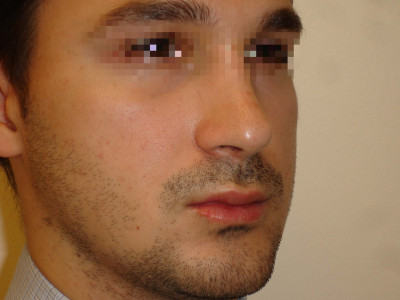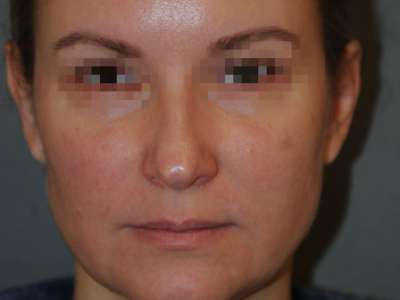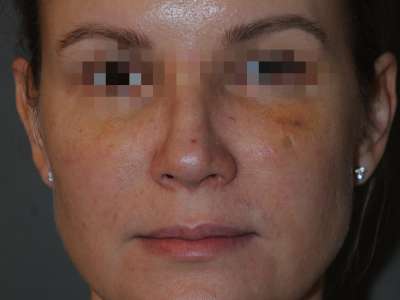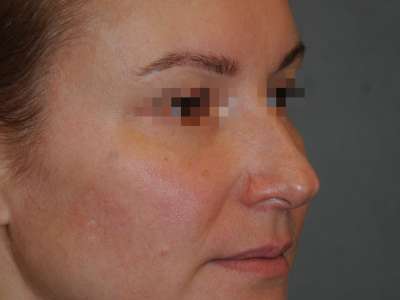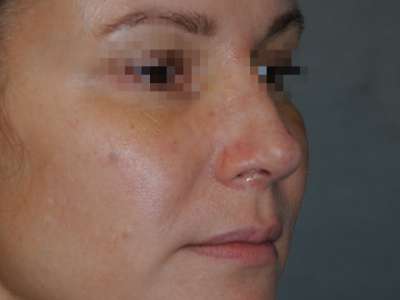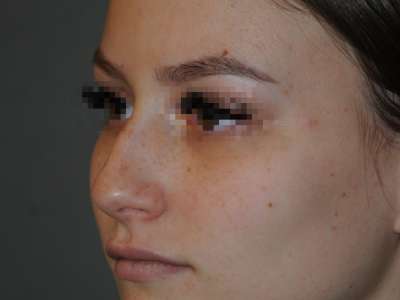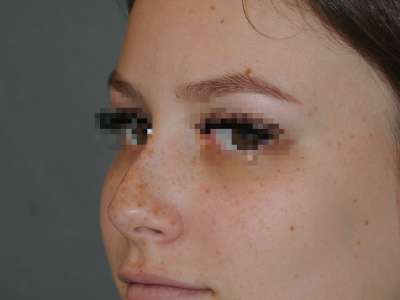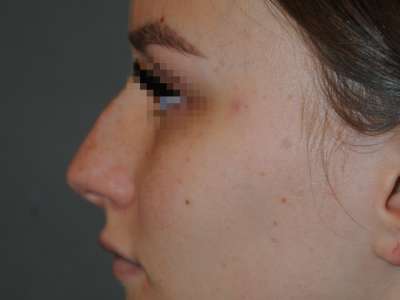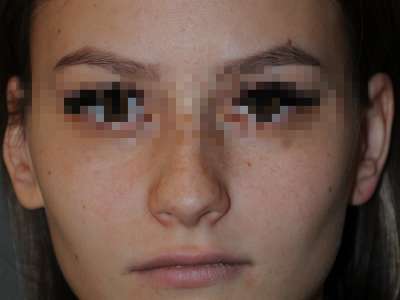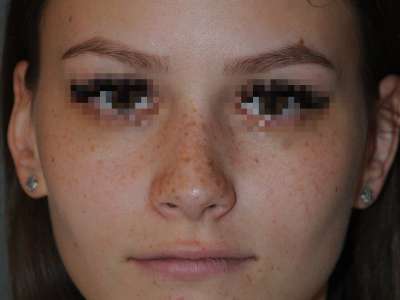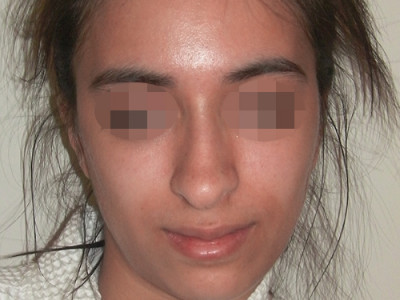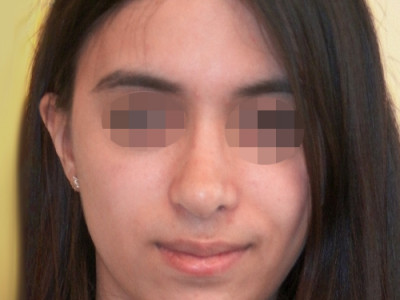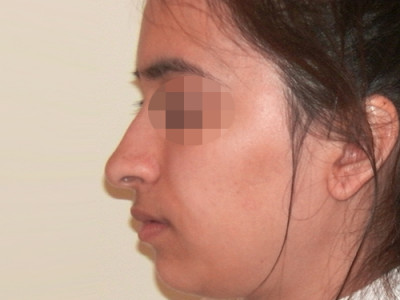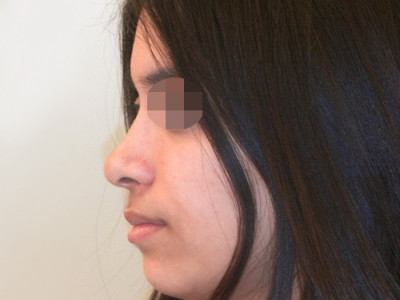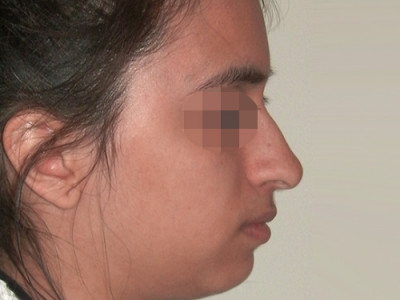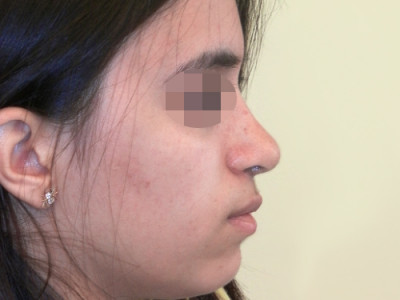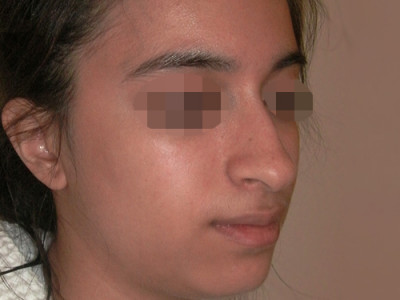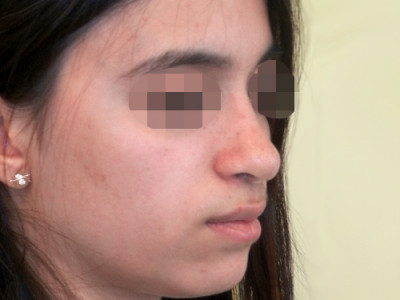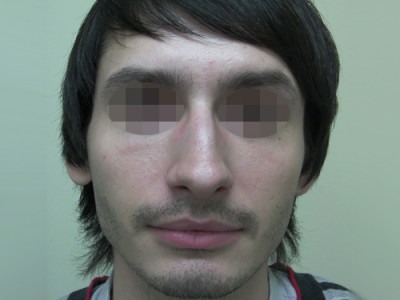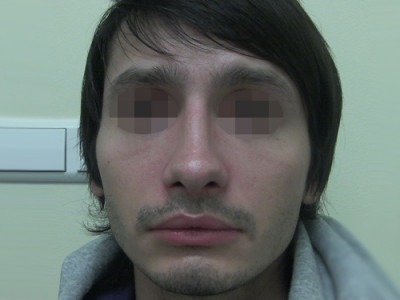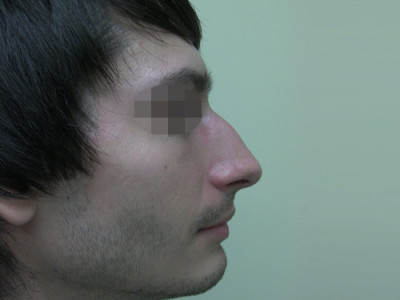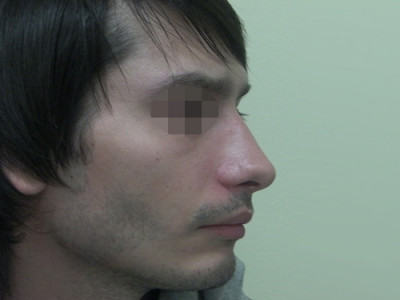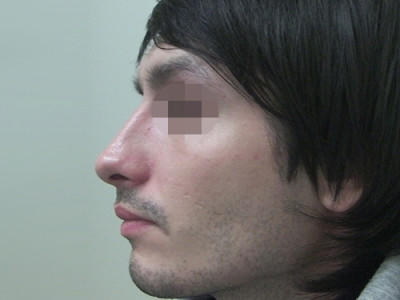Rhinoplasty is a surgical operation designed to aesthetically correct shape and size of the nose, as well as to provide its reconstructive restoration.
Beauty is harmony. And a beautiful face is primarily a face with all the features in harmony.
The nose greatly determines grace and harmony of the face. And even a minimal correction of shape or size of the nose can change the look, making it more attractive.
Indications for rhinoplasty
The most common purpose for rhinoplasty is aesthetic correction: the desire to change shape and length of the nose, remove the hump or correct nose deformities due to injuries. The second reason for correction is medical indications, for example, nasal septum deviation, which causes complications such as migraine and shortness of breath.
The general indications for rhinoplasty:
- Disproportionate size of the nose in comparison with other facial features.
- Nasal septum deviation.
- Congenital or acquired deformation of the bone-cartilage base of the nose.
- Asymmetry of the nose (hump, asymmetry of the nostrils; bifurcated, lowered or too raised, asymmetric tip, etc.).
- Unsatisfactory result of the previous operation.
Contraindications
Contraindications to the procedure are general for plastic surgery:
- cardiovascular diseases,
- diabetes mellitus (in severe forms),
- bleeding disorders,
- infectious diseases.
Surgery for nose correction is not recommended for patients under 18 years (and sometimes under 20 years), because at this age the cartilaginous tissue of the nose is still developing, which may affect the final result of the operation.
Types of Rhinoplasty
There are several options for nose correction - rhinoplasty, septoplasty and rhinoseptoplasty.
Rhinoplasty is an aesthetic correction of the nose that has no medical indications.
Septoplasty is a medical operation for nasal septum correction and improvement of the normal functionality of the nose, it is performed for medical reasons (shortness of breath, polyps).
Rhinoseptoplasty is a complex nose plasty, concerning not only correction of the proportions and shape of the nose (including nose tip correction), but also the correction of the nasal septum (septoplasty) in order to improve breathing function.
Reconstructive rhinoplasty is also performed in EMC, being a complex operation to restore the normal anatomy of the nose in case of tissue deficiency or volume loss of the patient’s own tissues due to injuries, accidents.
Preparation for nose surgery
During appointment the doctor examines the patient, discusses the surgical plan for nose correction, explains all aspects and possible complications of the operation.
The next step is computer 3D modeling: based on photographs of the patient, the surgeon models the future result of rhinoplasty, using a special program. After approval, the doctor prescribes an examination plan and the day of surgery.
Mandatory examination before surgery includes blood and urine testing, blood glucose level testing, ECG and a consultation with the anesthesiologist. You can go through the entire list of tests on the spot at the EMC clinic.
It is recommended to avoid medication intake and nasal drops for three months before rhinoplasty, since many of them can affect the healing process after surgery. If any medication was nevertheless used, it is obligatory to tell this information to the attending physician. You are not allowed to take any medications without the consent of your doctor. Some medication may adversely interact with drugs used for local and general anesthesia.
It is mandatory to stop smoking within 4 weeks before and after rhinoplasty (in some cases, for a longer period, which the doctor will designate).
Postoperative period
On average, the duration of the operation is no more than 2 hours.
Right after the surgery a tight bandage is applied to the patient's nose, being left for 7-10 days. The patient stays in the hospital for 1-2 days, then the doctor discharges the patient.
EMC offers the patients the most comfortable conditions of the inpatient stay:
- single and double rooms equipped with all necessary room facilities;
- round-the-clock surveillance of medical personnel;
- 4 meals a day;
- the opportunity to have visits of family and relatives 24 hours 7 days a week.
The entire postoperative period is under the supervision of the doctor: the surgeon prescribes regular examinations after removal of the cast, any additional questions are promptly resolved with the doctor by phone or on the consultation.
The period of rehabilitation after nose correction largely depends on the individual characteristics of the body and the age of the patient, that is why the doctor can only assume the approximate duration of recovery.
It is not allowed to be actively engaged in sports after the operation (from 4 to 8 weeks), you should also avoid sudden temperature drop. After the operation, the surgeon will give individual recommendations regarding nutrition and lifestyle.
Rhinoplasty in EMC
Each case of nose correction is individual and requires impeccable skills of the surgeon and his absolute anatomy knowledge of bone and cartilaginous structures of the nose, tissue and skin features.
Plastic surgery of the nose is one of the most popular plastic surgeries in the EMC clinic. The highest professional skills of our surgeons, high-level operational equipment allows us to carry out the most complex plastic and reconstructive surgical operations in EMC with minimal tissue injury.
The portfolio of EMC plastic surgeons includes more than hundreds of successful works, which allows our specialists to accurately predict the future result of correction.
FAQ
What tests do I need to take before rhinoplasty?
Before the operation, you need to take urine and blood tests, undergo a chest examination and an anesthesiologist consultation. You will get a complete list of tests after consulting the doctor.
At what age can rhinoplasty be performed?
Plastic surgery is performed in patients over 18 years old.
What kind of anesthesia is provided during rhinoplasty?
Rhinoplasty is performed under general anesthesia.
What day after the operation is cast and sutures removed?
Generally, longuette cast is removed within 10-12 days after rhinoplasty. Sutures (in case of nostril correction) are removed on the 4th day after the operation.
How long does edema last after rhinoplasty?
External edema disappears after nose surgery in 3 weeks. The recovery period is always individual, on average the nose finally heals within 8-12 months.
